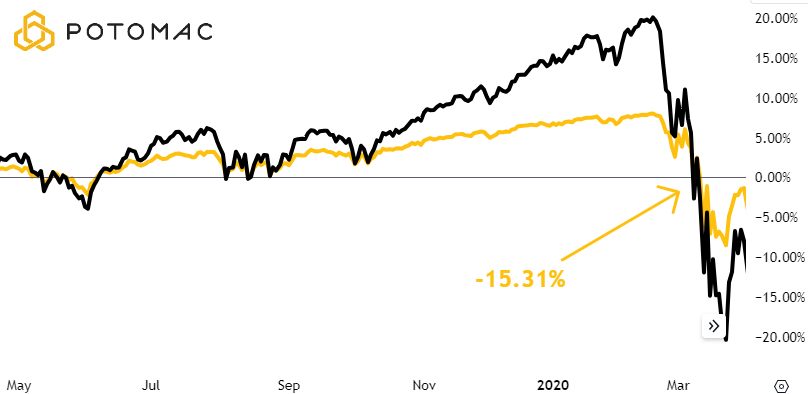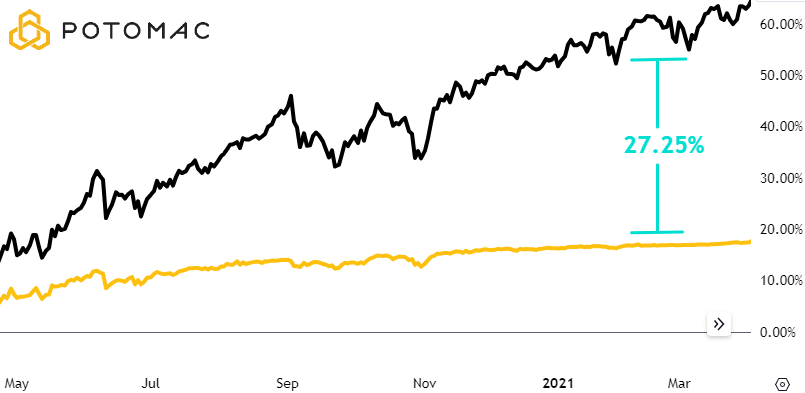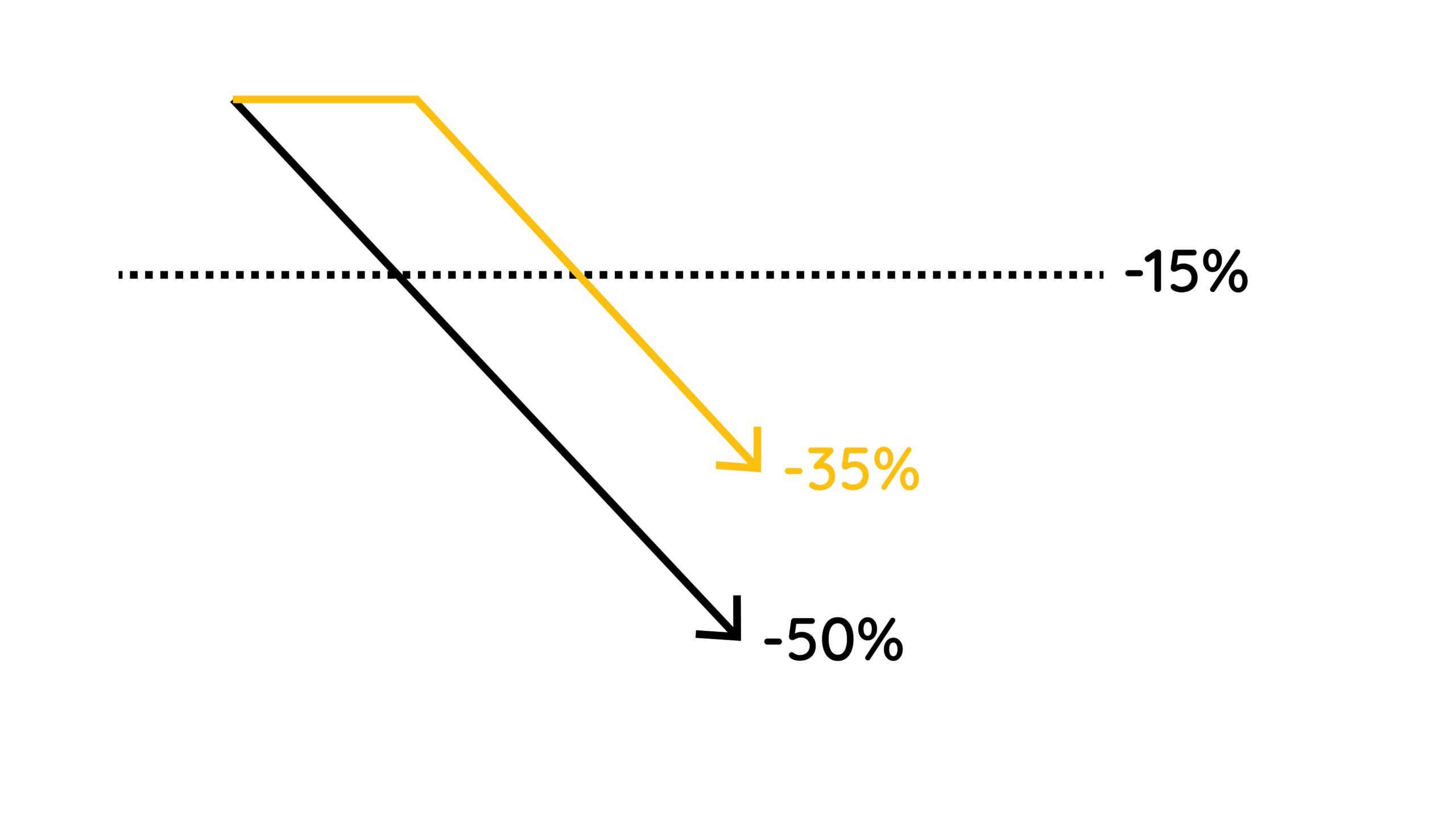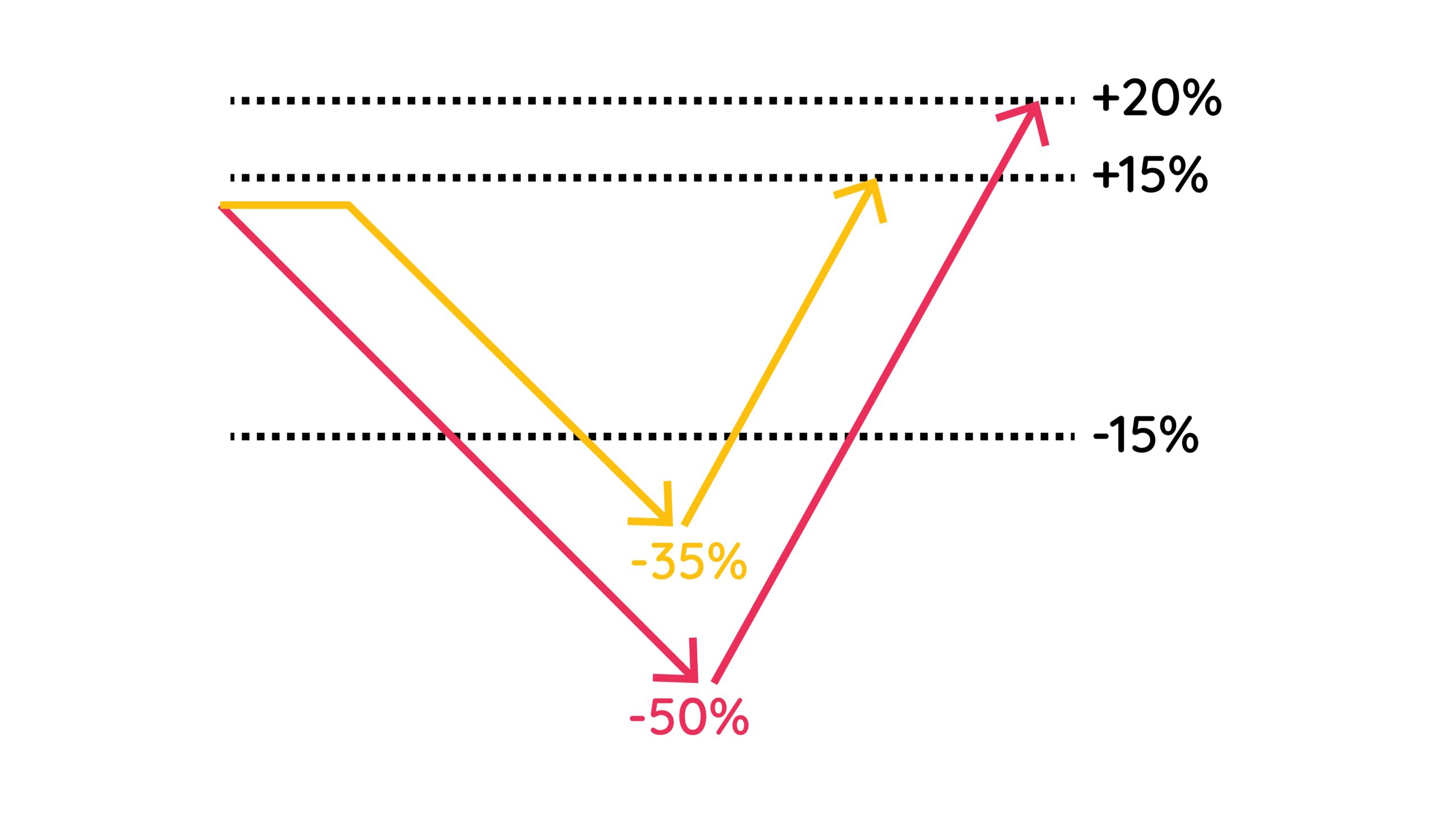
Buffer ETFs have gone from nonexistent to an over $27 billion (about $83 per person in the US) AUM product as of mid-2023. It started with Innovator, then First Trust, and now iShares is jumping into the mix.
By using options, the ETFs construct a position that aims to define the outcome over the following 12 months.
The outcome and selling point are that there is a certain threshold with which the index must decline before losses in the ETF are realized. At the same time, the ETF is free to capitalize on gains up to a certain threshold, at which the ETF will go flat, and there will be no more up-capture.
Time to be skeptical and question them like any good markets guy.
Defined Doesn’t Mean Easy
There are significant concerns that arise when an outcome is defined. How long will the defined outcome last? What is the path to get there? Am I able to hold through the entire period?
The time frames for these products are universally round number dates. For example, one of the first that launched is the Innovator U.S. Equity Power Buffer ETF (PAPR). PAPR begins in April 2019 and aims to define the outcome for the following 12 months. It aims to buffer (protect the holder) against the first 15% downside.
Below, in yellow, is PAPR from inception through the first year compared with the S&P 500 (S&P). Job well done, right? The drawdown was less than half that of the S&P 500.

The investor would have had to be willing to hold through a 15.31% drawdown, which is reasonable for any realistic market participant. So far, so good.
Now the investor continues to hold for the following year, April 1, 2020, through April 1, 2021, the holding period for which the product was designed.

This 12-month period tells a much different story, an underperformance of 27.25% vs the S&P 500. The client may be glad to have had less drawdown during Covid, but can they accept that much underperformance on the way up?
The math over this period shows that PAPR had ~45% of the drawdown of the S&P and only ~25% of the upside the following year. Said differently, the ETF only captured 25% of the upside while still experiencing 45% of the downside. That’s not exactly the goal of any strategy. But again, this is a product and not a tactical strategy that adapts to the market.
The Path Isn’t Linear
The second major problem is that the path to the defined outcome may not always be easy. Let’s look at what a 50% decline would look like for the S&P 500, an event that has happened multiple times in the past, and its effect on a hypothetical buffer ETF.
The hypothetical buffer ETF below, in yellow, will have a 15% downside buffer as marked by the dashed line. This means that it will protect against losses for the first 15% over the next 12 months.
Assume that the S&P 500 declines 50%, as shown by the black line. At best, the buffer ETF will be down 35%. That is 50% minus the buffer of 15%.

A 35% drawdown is steep, and many investors may not be willing and able to make it out on the other side, especially knowing that the upside is still capped.
Yes, the upside cap is still there despite the large drawdown.
Now let’s think about if the S&P 500 magically erased that entire 50% drawdown AND the S&P managed to gain 20% on the year.
The graphic below shows the ETF, in yellow, would only be up 15% because of the cap set in place at the beginning of the year. The math says that the fund earned ~$0.43 of reward per unit of risk (15% gain divided by 35% drawdown). That’s not the math that any tactical or active fund strives for.

Predefine Your Plan, Not Your Outcome
Tactical strategies come in many different forms. We use those quantitative and tested with track records through severe bear markets.
Buffer ETFs haven’t seen a 50% drawdown in stocks yet, and when that happens, it may not be tolerable enough to stick with the strategy. We don’t want to be at the will of what “the market” is doing but rather have a set of systems that will drive our positioning.
Of which, cash is an option. There is a drawdown always looming, it’s just a matter of when. Check and double check your strategy to know if there is a plan for when that time comes.
How is Potomac Different?
For starters, there is nothing predefined about the way that we invest other than the fact that we follow the signals generated by our composite models. As such, we can only speak at a high level.
Potomac’s models are not designed to “sell the top.”
We will not guarantee investor protection on the first x% move lower from a specific date or point in time. In fact, due to the trend-following nature of some of our indicators, it is very likely that the market will already be moving lower when we receive our sell signals.
However, if the model generates a sell signal, we can and will move to a cash position, helping to protect investors from further declines. If the decline is similar to that of the bursting of the dot com bubble or the Global Financial Crisis, a cash position will continue to provide protection even as the Buffer product ceases to do the same.
On the upside, Potomac’s models are not designed to deliberately cap upside potential.
In short, we believe that small amounts of downside are normal and healthy for the market but that large drawdowns can be catastrophic. Essentially, the opposite of the Buffer product. We also believe that the goal of an investment manager is not to limit upside capture.
Potomac Fund Management ("Potomac") is an SEC-registered investment adviser. SEC registration does not constitute an endorsement of the advisory firm by the SEC nor does it indicate that the advisory firm has attained a particular level of skill or ability. This information is prepared for general information only and should not be considered as individual investment advice nor as a solicitation to buy or offer to sell any securities. This material does not constitute any representation as to the suitability or appropriateness of any investment advisory program or security. Please visit our FULL DISCLOSURE page. Potomac does not make any representations or warranties as to the accuracy, timeliness, suitability, completeness, or relevance of any information prepared by any unaffiliated third party, whether linked to the Potomac website or incorporated herein, and takes no responsibility for any of this information. The views of Potomac are subject to change and Potomac is under no obligation to notify you of any changes. Different types of investments involve varying degrees of risk, and there can be no assurance that the future performance of any specific investment or investment strategy will be profitable or equal to any historical performance level.
PFM-611-20240312
